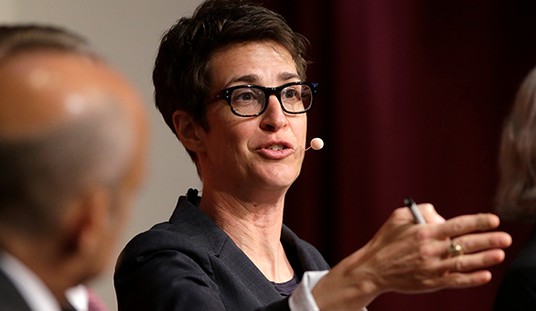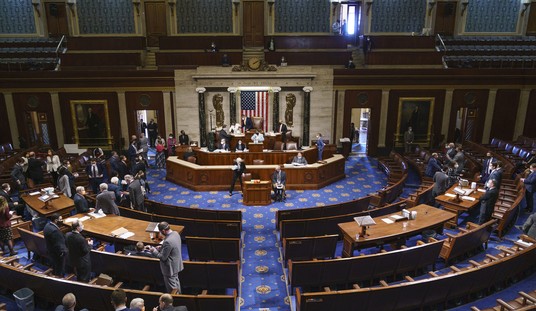In the 1800s, skeptics dismissed religion as “the opiate of the masses” (Karl Marx) or the “universal obsessional neurosis of humanity” (Sigmund Freud). Many thinkers expected religion to disappear as scientific progress and material prosperity spread — but the opposite happened. Sociologist and historian Rodney Stark tried to explain why, by taking religion seriously.
“Every sociologist was taught that religion would be gone by next Thursday, no question about it,” Stark, author of the new book Why God: Explaining Religious Phenomena, told PJ Media in an interview. “It didn’t happen. Now, British historians are starting to say this secularization theory is nonsense.”
Many religious people might cringe at the idea of science explaining the sociology of religion, but Stark argued “we have every right to try to explain the human side of religion.” The existence — or non-existence — of God is a separate matter. “It’s certainly suitable for sociology to ask, ‘Why do John and Mary go to church and Dick doesn’t?’ That’s all I’m up to.”
Stark dismissed many of the arguments of famous atheists like Freud and Marx as “scurrilous metaphors” which do not take religion seriously and do not actually explain how it works. He had a slightly more positive interpretation of the sociological theories which explain religion as a social force, but dismissed them as missing the forest (God) for the trees (cultural cohesion and morality).
“Social scientists who think God isn’t part of religion don’t know what religion is and consequently can’t explain anything,” the author argued. “The idea of religions without gods is a little bit like baseball without a ball — the whole thing becomes pointless and meaningless.”
Why? Because belief in God gives life meaning, Stark argued. “If life is going to have meaning, then it has to have a creator. Right now, we’re in the God business.” He argued that “if you eliminate that, you’re in a universe that arose by accident, that has no meaning. Any morality is morality we make up, there is no such thing as a god-given morality.”
The search for meaning and the desire to ground morality in absolutes require a God or gods, the author argued. He even claimed that some of the most prominent New Atheists like Richard Dawkins and Carl Sagan “can’t live with” the idea that life is meaningless.
“Did you ever notice that people like Dawkins and Sagan have to believe in extraterrestrials?” Stark asked. “Dawkins comes right out saying there are godlike races in the universe. It’s flying saucer gods, but it’s not very good atheism. There’s no more evidence for that than there is for a creator God.”
Why God did not just explain why people believe in God, however. It also described how they live out that faith, and why it can look so different.
Much of Stark’s analysis applied lessons from economics to religion. In the book, he cited field anthropologists who “report abundant examples demonstrating that the sharp practices, the endless haggling, and the raw self-interest we expect even in the most rudimentary bargaining systems turn up in exchange relations with the gods as well.”
Religious “shopping” shows up in various contexts, from Catholics seeking a confessor who imposes the mildest penances to folk religions substituting an inferior animal to avoid sacrificing a superior one. Religious haggling only makes sense if people truly believe that God or the gods can give them real benefits — either in this life or the life to come.
But Stark’s economic theory of religion didn’t just explain the religious “supply” — that God (or gods) is able to provide important benefits — it also delved into the religious “demand” — different people want different things out of religion. Because demand for religion varies in any society, multiple churches is the natural state of a religious economy, the author argued.
“You can only have a religious monopoly if the state is willing to impose it,” because some people want a religion with many costly demands and others want a religion that makes very few demands. “One church can’t be both liberal and conservative, demanding and undemanding, you just can’t do that.”
Why God presented a demand curve, showing the amount of people seeking varying degrees of tension between the demands of religion and the prevailing culture. Very few people have extreme religious tastes, for “ultra liberal” (vague New Age spirituality, for instance) or “ultra strict” (the Amish) religion. More people fall into the “liberal” (Episcopal Church) or “strict” (Mormons, Pentacostal churches) niches.
Most people, however, fall right smack in the middle — wanting a “moderate” religion (most Lutherans, American Baptists) or a “conservative” one (Southern Baptists, Missouri Lutherans, Conservative Jews).
This bell curve hypothesis explained a great deal. Stark noted that “there are more people who want a moderate religion than those who want a strict religion, so when strict religions start moderating, they’ll grow. But people don’t want a religion that asks nothing. Pretty soon, they’re in a position where they’re not even sure their minister believes in God, and that’s goodbye.”
The Protestant Mainline went through this transition. Churches like the Methodist Church started off as sects — John Wesley had a very high level of commitment to Jesus, and encouraged his followers to sacrifice a great deal. But after the Methodist Church was established, church leaders realized they would attract more people if they became more moderate. Eventually, they became so moderate that they were actually appealing to fewer and fewer people.
“People go to church for religion,” Stark explained. “If you stop giving it to them, they go someplace else.” In the past 50 years, Mainline denominations shrank while evangelical churches expanded. “Church membership has never been higher than it is now in the United States,” the author declared.
Government and religion do not necessarily mix very well, but throughout history one church has often been supported by the state. If there is no anti-state religion, political opposition to these governments may become antireligious, Why God explained.
This theory fit the struggle between revolutionaries and churches throughout history: first in France, then in Russia, then in China. “It came to be a settled opinion on the Left even prior to the French Revolution that the church was inevitably on the Right and that in order to make the revolution succeed, you’ve got to destroy the church,” Stark explained.
Following the beheading of King Louis XVI in the French Revolution, nearly 1,000 priests were beheaded, and churches were desecrated and turned into “Temples of Reason.” In the first five years of the Bolshevik Revolution in Russia, revolutionaries executed 28 Orthodox bishops and more than 1,200 priests. Modern estimates place the number of Russians killed for their faith under the Soviet Union at over 20 million.
In Red China, traditional temples were destroyed, millions were sent to “reeducation camps,” and nearly 2 million were murdered for religion alone.
But despite these persecutions, and the gruesome deaths of believers at the guillotine, in the gulag, or at the hands of the Red Guard, the state efforts to stamp out religion failed.
“The Communist Party believed that religion was the enemy, so the Soviet Union had a requirement for sixty years that every student have many hours of the school year devoted to scientific atheism,” Stark told PJ Media. But after the Soviet Union fell, a poll in 1990 found that only 6.6 percent of Russians identified as atheists.
Despite the longstanding oppression of atheist Communism in China, that country is still very religious, the author added. “They’ve rebuilt tens of thousands of folk temples, and there are a hundred thousand or more Christians.”
Due in part to this history, Stark confidently predicted that when the regime of Kim Jong-Un in North Korea falls, “there’s going to be a huge resurgence of religion in North Korea.”
Religion is alive and well across the globe, and Why God presented an excellent theory as to how and why religious belief is an enduring aspect of human life. In the book, Stark suggested that his ideas are a sociological theory of religion, and he encouraged further research to prove him wrong and develop an even more nuanced understanding of religion. (He also addressed other issues, like the social aspect of conversion, why rich people tend to be religious, and how religions get started.)
As long as humans have hearts to demand moral goodness and minds to wonder at the universe, they will also have a need for God, Stark suggested. Religion, it seems, is as unavoidable as death and taxes.









Join the conversation as a VIP Member